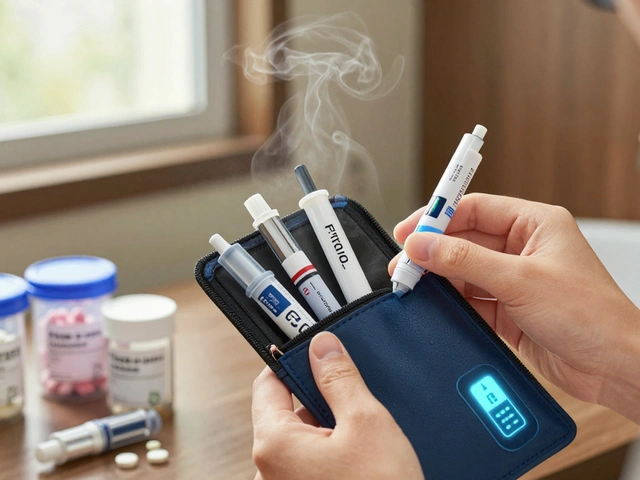Sitagliptin phosphate: what it does and how to use it safely
Sitagliptin phosphate is a pill many doctors prescribe for type 2 diabetes. It belongs to a class called DPP-4 inhibitors. In plain terms, it helps your body release more insulin after meals and lowers the amount of sugar your liver makes. That can help lower A1c without causing big swings in blood sugar for most people.
How sitagliptin works and who should use it
Doctors usually add sitagliptin when diet, exercise, and metformin don’t control blood sugar well enough. The common dose is 100 mg once daily, but your doctor will change that if you have kidney problems. If you have reduced kidney function, lower doses are typical to avoid buildup and side effects.
It’s not for type 1 diabetes or for treating diabetic ketoacidosis. If you’re pregnant, breastfeeding, or planning pregnancy, discuss options with your provider—sitagliptin isn’t a first choice in those situations.
Safety, side effects, and buying tips
Most people tolerate sitagliptin well. Common side effects are upper respiratory symptoms, headache, and mild stomach upset. Rare but serious issues include pancreatitis, severe joint pain, and allergic reactions. If you get sudden severe belly pain, continued joint pain, or signs of an allergic reaction (rash, swelling, trouble breathing), stop the med and seek care right away.
Watch out for low blood sugar if you combine sitagliptin with insulin or sulfonylureas (like glipizide). Your doctor may lower the dose of those drugs to avoid hypoglycemia. Sitagliptin has few major drug interactions, but always tell your prescriber about all medicines and supplements you take.
When using sitagliptin, check your A1c and kidney function regularly. Simple urine tests and blood work help your doctor adjust dose and spot issues early. Keep a log of fasting and post-meal glucose readings for better decisions in clinic visits.
Thinking about buying sitagliptin online? Get a valid prescription first. Use licensed pharmacies, check for a physical address and pharmacy license, and read reviews from real users. Telehealth services that connect you with a licensed clinician are a safer option than pharmacies that sell prescription drugs without a prescription. Avoid suspiciously cheap offers and sites that won’t verify your prescription.
Small habits help too: take the pill at the same time every day, store it in a dry place at room temperature, and don't split tablets unless your doctor says so. Carry a list of your meds and emergency contact info when you travel.
If you want to compare options, ask about combining sitagliptin with other diabetes drugs, or about alternative drug classes like SGLT2 inhibitors or GLP-1 agonists. Each has different benefits and risks, and your doctor can help pick what fits your health goals and budget.

Sitagliptin Phosphate and the Management of Diabetic Foot Ulcers
As a blogger, I recently came across an interesting topic related to the management of diabetic foot ulcers - Sitagliptin Phosphate. This medication, typically used to control blood sugar in people with type 2 diabetes, has shown promising results in healing diabetic foot ulcers. Studies have revealed that Sitagliptin Phosphate not only improves glycemic control but also reduces inflammation, which aids in the healing process of these ulcers. The dual benefits of this drug make it a valuable addition to the current treatment options available for diabetic foot ulcers. I'm excited to see how this medication will continue to improve the lives of those suffering from this debilitating condition.




